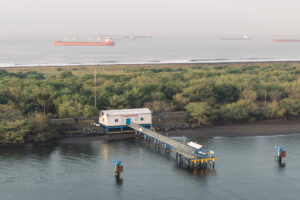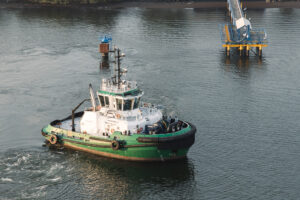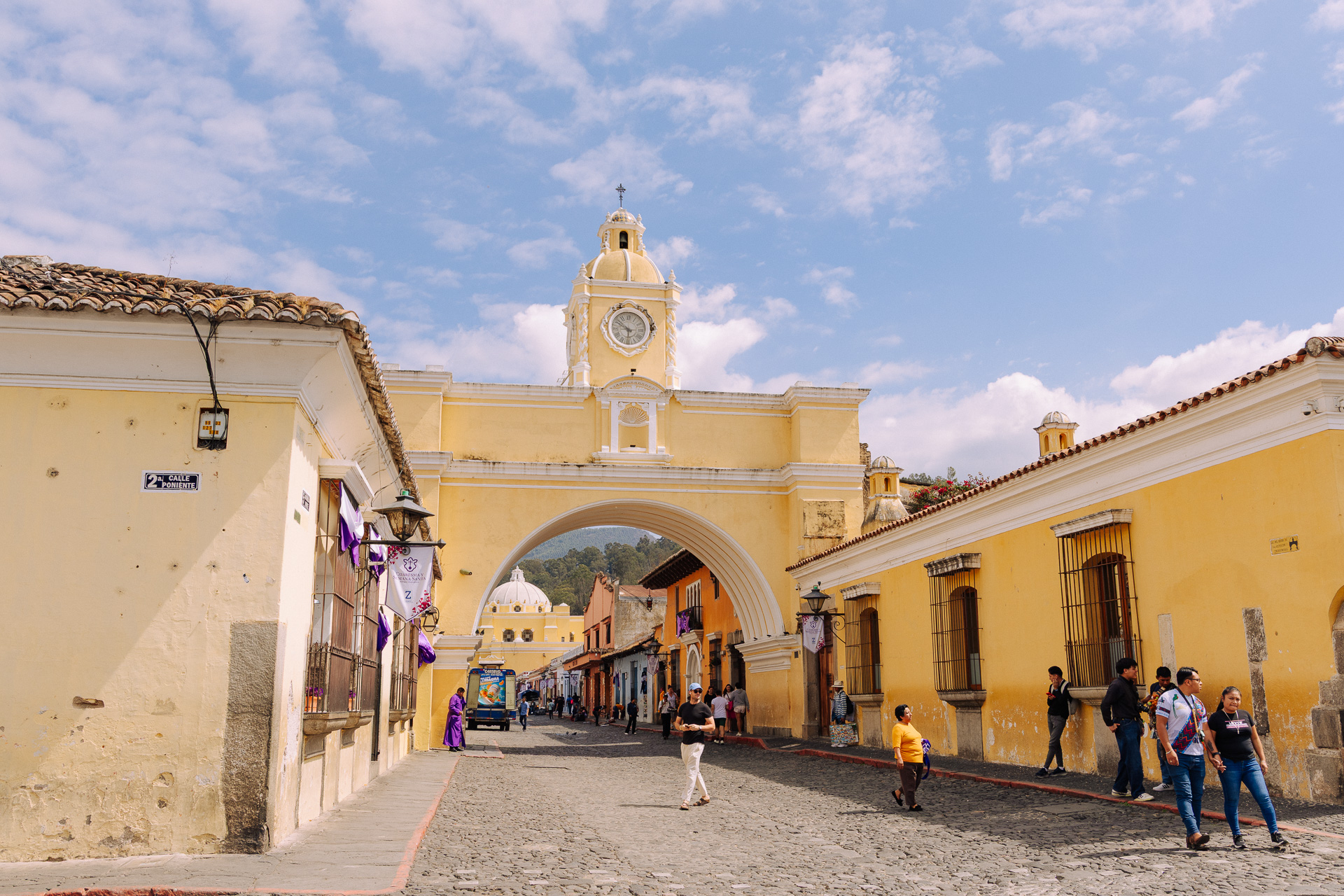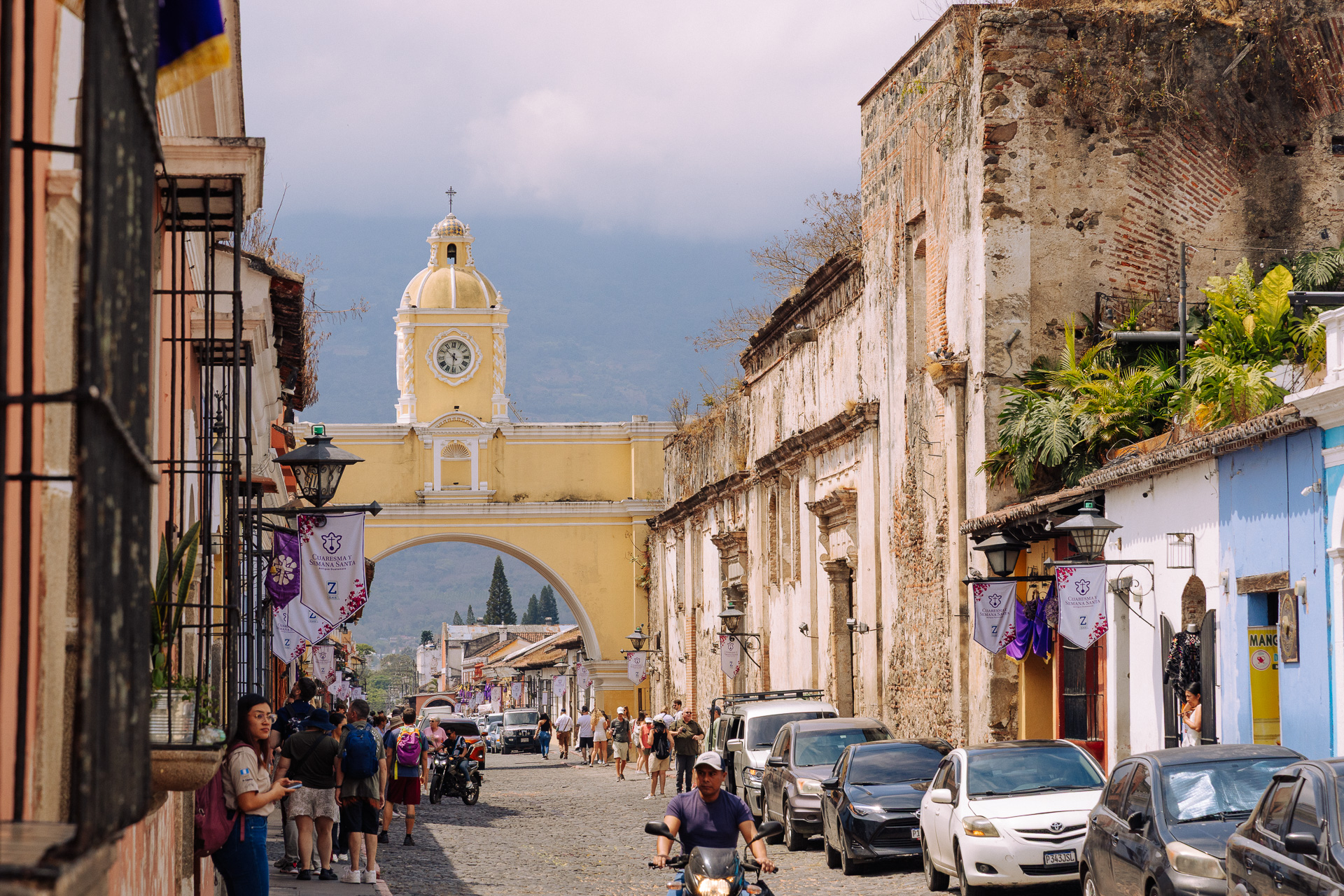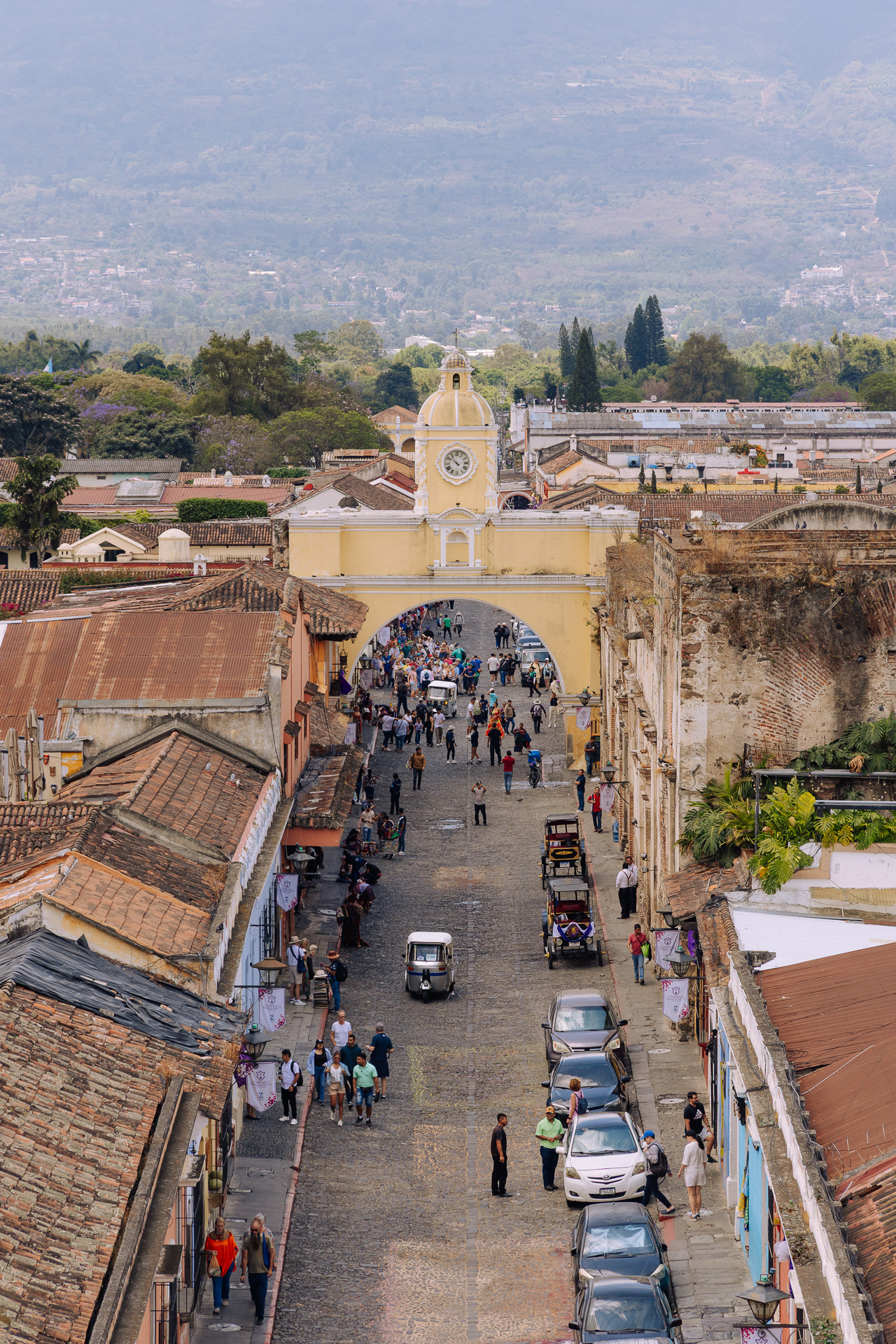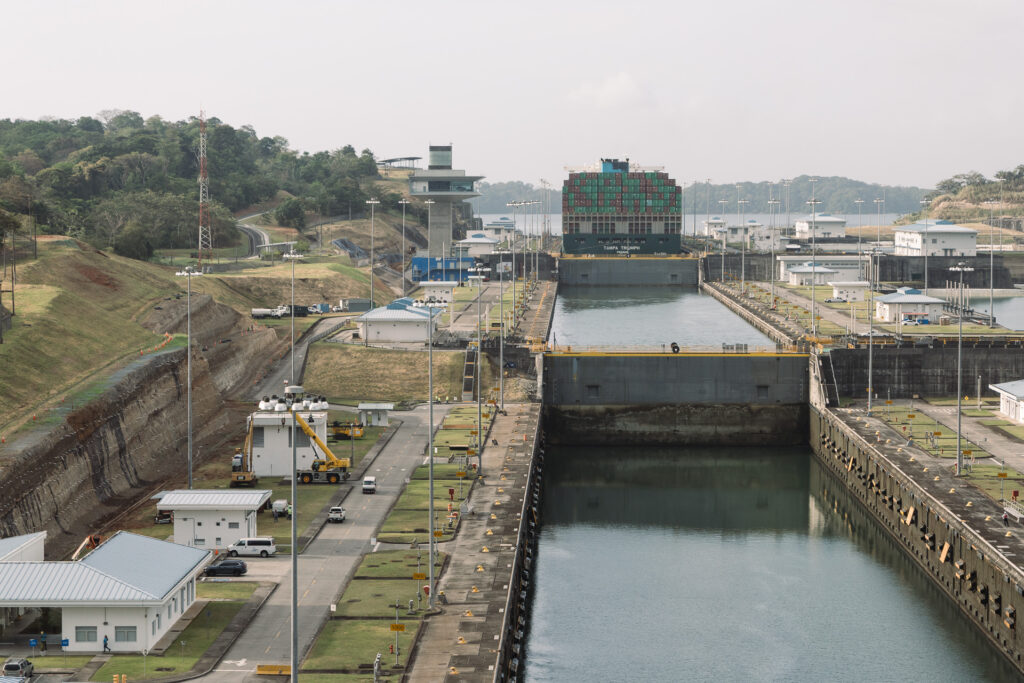We docked in Puerto Quetzal at the eye-watering hour of 6.30am. Our alarms went off at 5.30, which I thought was bold. Ben thought it was criminal. Neither of us is at our sparkling best before sunrise, and if we’re being honest, I don’t think either of us had properly woken up until we were off the ship and into the vibrant port area. We were headed into Antigua on the NCL Antigua on your own shore excursion!

Heading north from the Port.
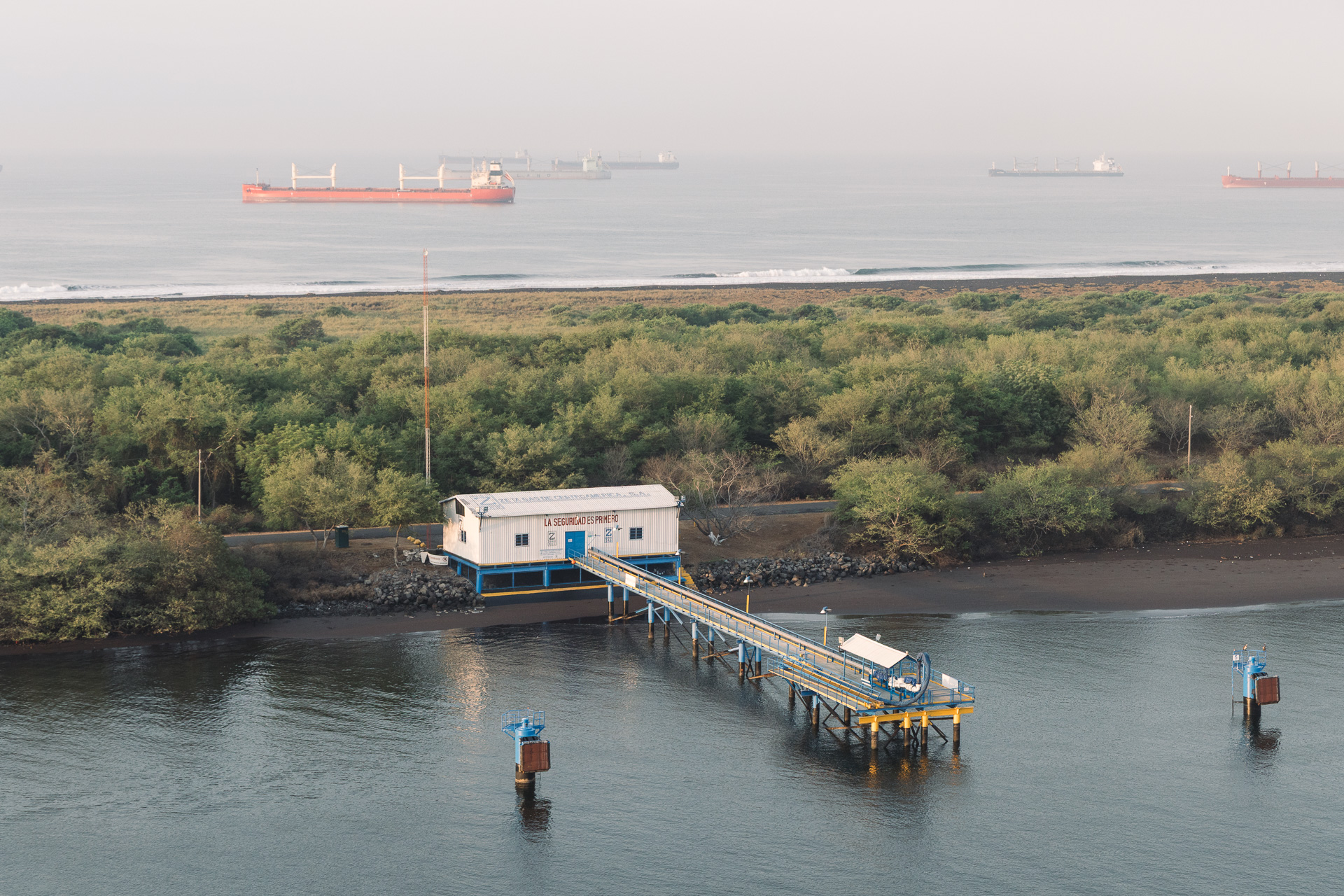
The view from our stateroom.
Antigua is about 90 minutes from the port (on a good day), but the views made it feel shorter. Volcanoes everywhere — properly dramatic ones, like something out of a movie. One even had smoke puffing gently out the top, which felt very “yes this is an active region but let’s not dwell on that for too long from this very slow-moving coach.”
Also — worth noting — Antigua sits at around 1,500 metres above sea level, which is just high enough to make you feel slightly floaty after a strong coffee. At one point I wasn’t sure if I was dizzy from the altitude or just overwhelmed by how colourful the buildings were.
A walk through time (and cobblestones)
Antigua itself is a riot of colour and cobbles — pastel buildings with terracotta roofs, crumbly colonial facades, and streets that seem like they were specifically designed to twist an ankle. We wandered through Central Park (Parque Central, if you’re feeling fancy), which was already busy with locals, dogs, and street vendors.
From there, it was a short walk to the Santa Catalina Arch — basically Antigua’s most famous landmark. It was originally built so that cloistered nuns could cross the street between convent buildings without being seen. No idea what they were doing that required that much privacy, but I respect the commitment.
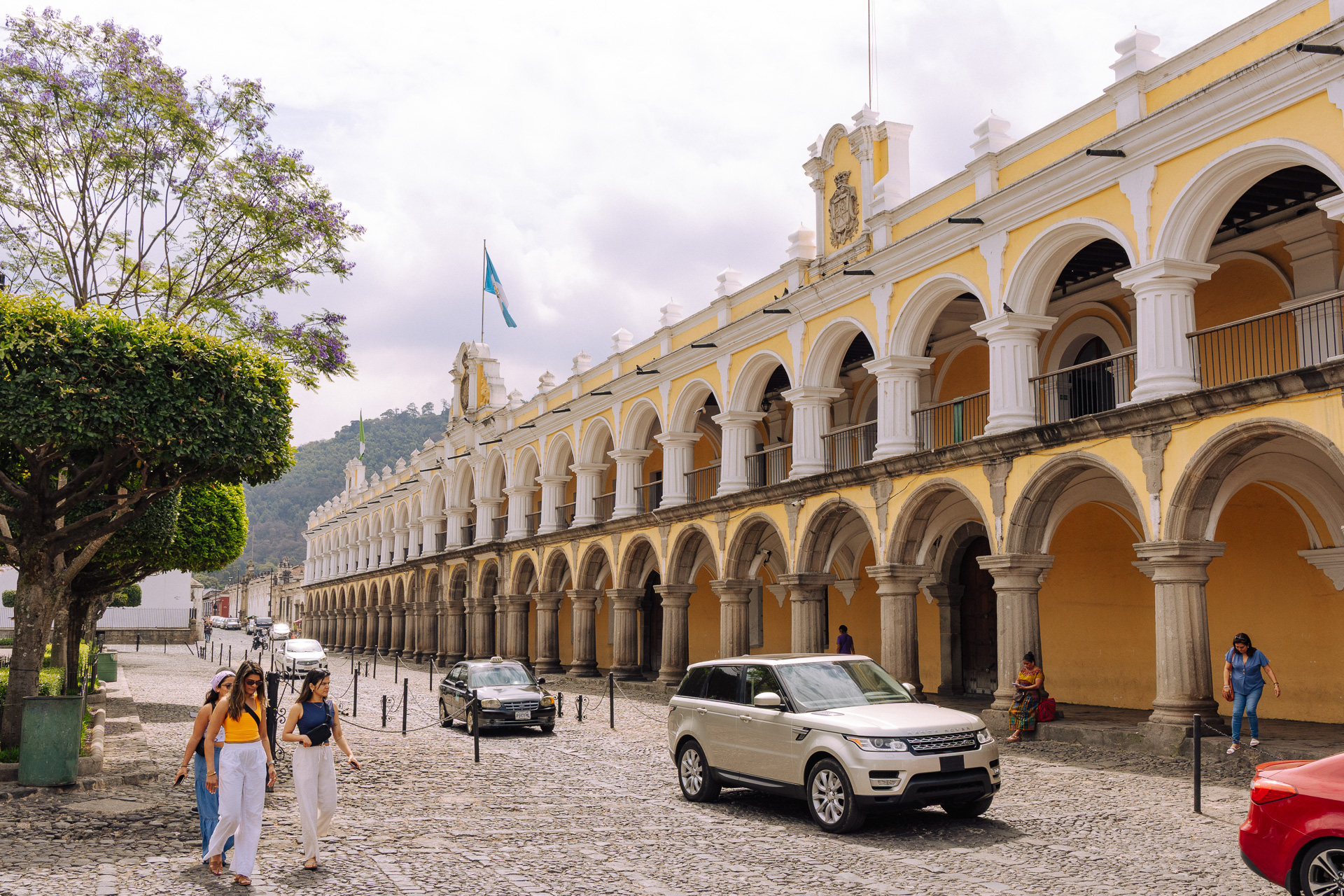
Palacio de los Capitanes.
The whole city has a bit of a ‘living museum’ vibe — and rightly so. It’s a UNESCO World Heritage Site, thanks to all those preserved colonial buildings and churches. Though Antigua’s had a rough time of it… it was the capital until 1773, when a massive earthquake flattened almost everything. They moved the capital to Guatemala City after that — probably a good call, considering the whole region sits on a fault line, flanked by active volcanoes.
Breakfast and bilingual confusion
Breakfast was at a lovely little spot called Restaurante del Arco, just by the famous arch. We ordered an omelet each with some meaty insides and it was really good!
We’re trying to use a little Spanish when we’re out and about. I’m not very good, just a few key phrases really but Ben is much better. After we ordered breakfast, we tried to ask where the restroom was and ended up with some orange juice, biscuits and bread delivered. I’m still not entirely sure how, but we rolled with it.
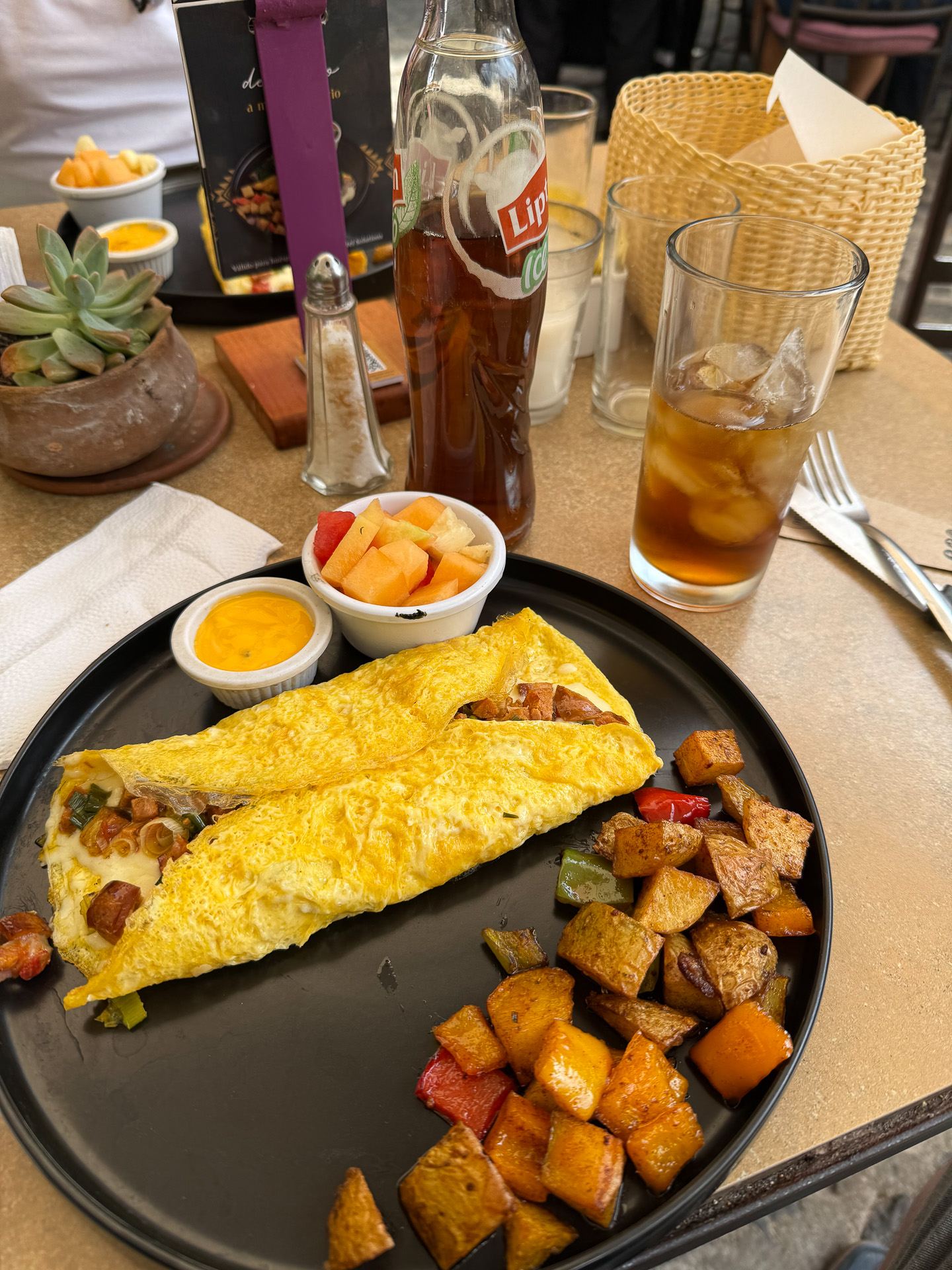
Breakfast and biscuits.
Monasteries and magnets
Next stop: La Merced Church and Monastery. It’s a beautiful building, and we paid 5 USD each to go up on the roof, which was absolutely worth it for the views alone. There’s something surreal about looking out over volcanoes from a baroque rooftop.
We also learned that the church survived multiple earthquakes, floods, and even a lava flow or two — the kind of place that refuses to be knocked down.
Once we had finished up, we headed outside to the markets to pick up a fridge magnet for my sister to add to her impressive collection.
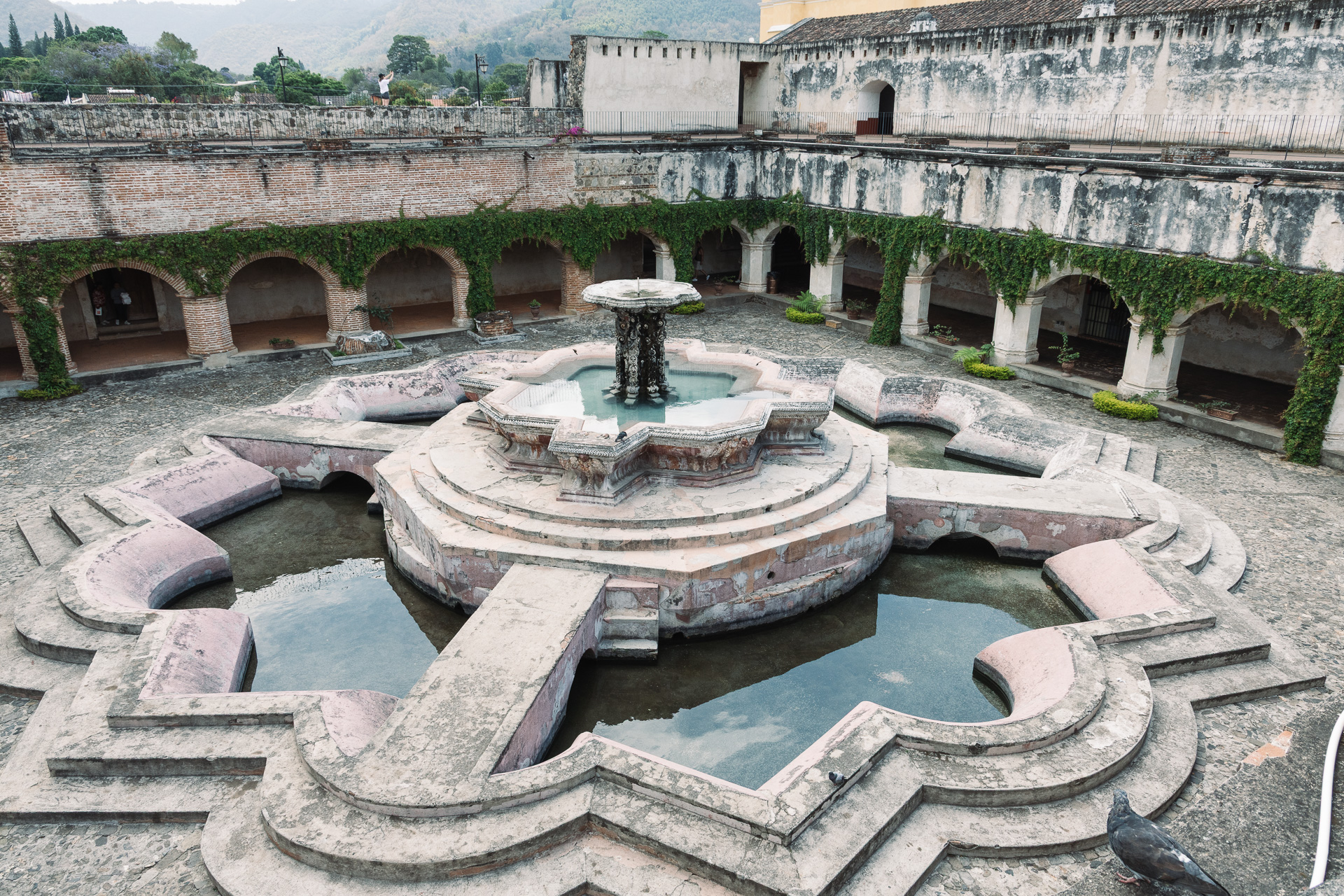
La merced fountain.

From the rooftops, AC style.
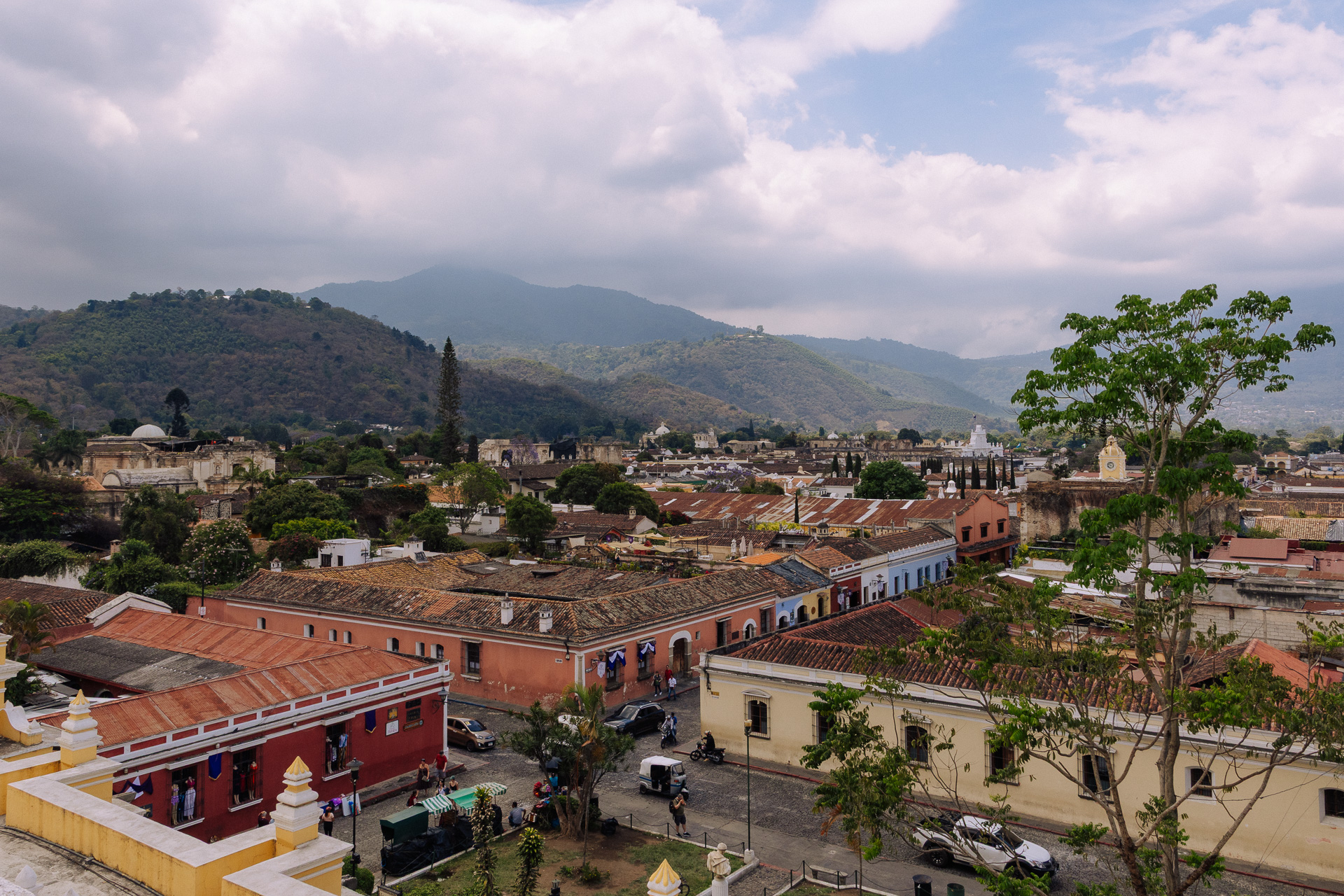
The view, absolutely worth the steps.
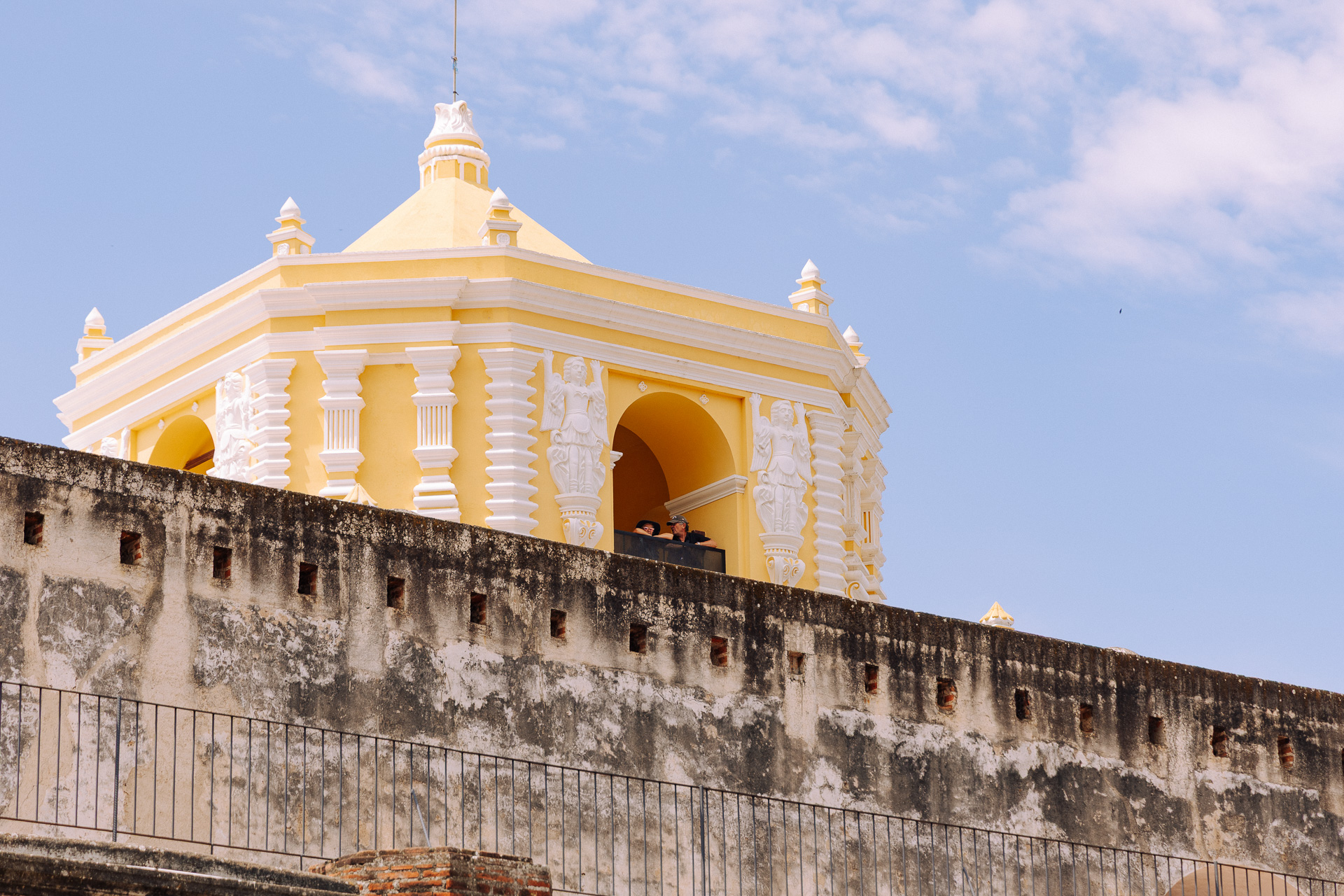
The prize, folks look out to take it all in.
Jade, Yorkshire, and unexpected life choices
Our final stop was the Jade Maya Museum, which also happened to be our coach pick-up point. While we were waiting, we sat in on a quick presentation from a woman originally from Yorkshire (not too far from our home) — she came to Antigua for two weeks 46 years ago and never left. We didn’t get her full life story, but she now gives daily talks about jade, so clearly something worked out. It was nice to hear a familiar accent.
Apparently, Guatemala is one of the few places in the world where jadeite — the rarer, tougher, and more vividly coloured version of jade — is naturally found. The ancient Maya valued it more highly than gold, carving it into ceremonial masks, jewellery, and various deeply meaningful bits that now sit in museums or very expensive gift shops.
Modern jade production here still uses traditional carving techniques, and the colours range from deep green to lavender and even blue. Whether or not you’re in the market for a jade jaguar pendant, it was a fascinating little detour — and quite soothing after the heat and bustle of the streets.
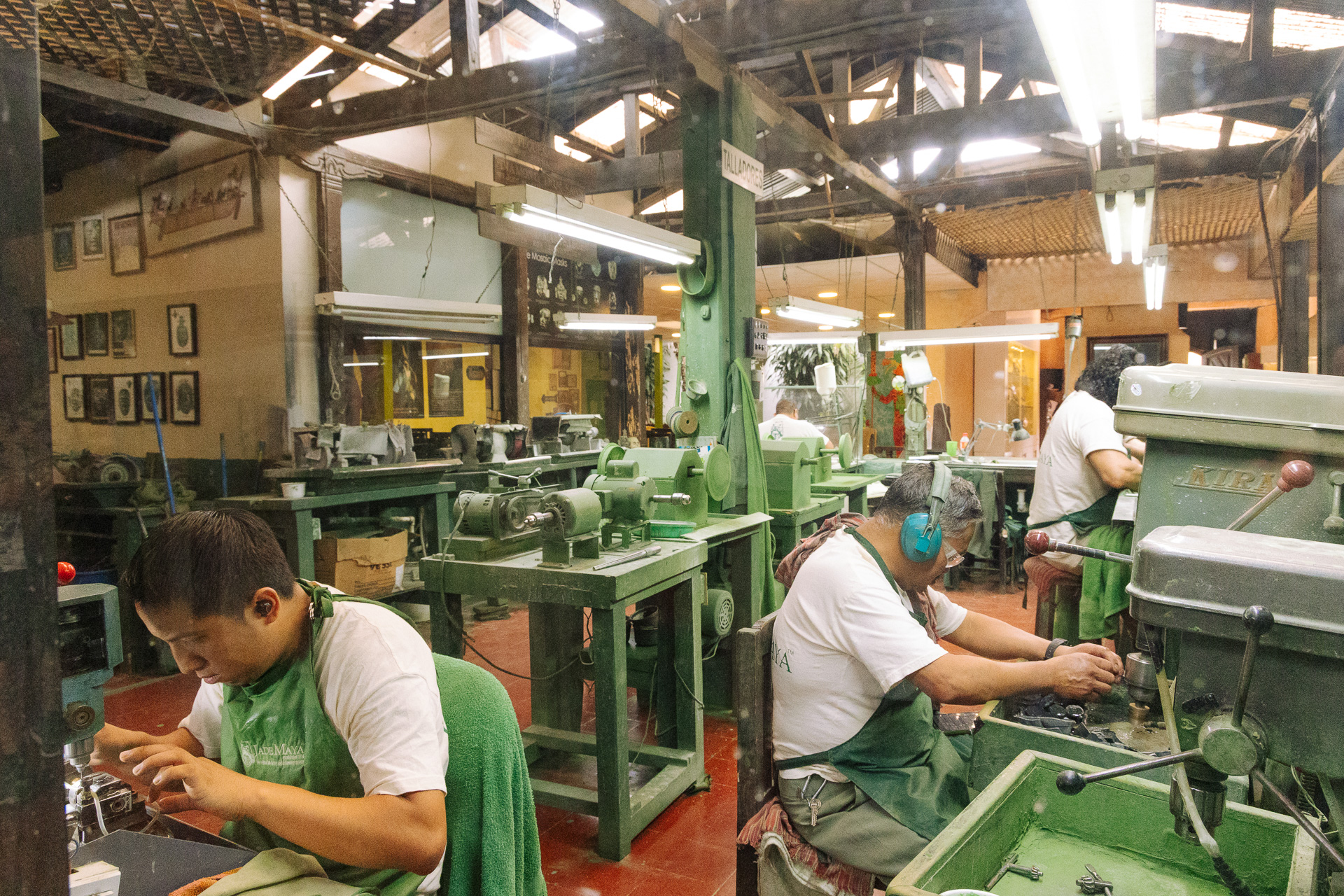
Jade museum workshop, where they appeared to be working the jade stone from the local area.
A drink, a shower, and a deep sigh
Then it was time to head out. Only… no coach. Cue mild panic, and some very British loitering. Eventually, the coach turned up 15 mins late, which would be ok if the guide hadn’t insisted that we be on time and they’d only wait 10 minutes. But shortly after boarding it started to smell… odd. Someone near us had almost certainly had an accident… I’d rather not elaborate further.
The drive back took a full hour longer thanks to traffic, so we had plenty of time to stew in it — both literally and figuratively.
We made it back to the ship with enough time to peel off our layers of suncream, sweat, and whatever had been lingering on that bus. A quick drink, a blessedly hot shower, and we were ready for sail away — which, thankfully, involved no further coaches.
Final thoughts
Antigua is beautiful. Colourful, chaotic, full of charm (and nuns with mysterious agendas). The altitude might make your head spin, but the scenery definitely will. The journey there and back was… character-building. But would I do it again? Absolutely!
Read more in our comprehensive trip report here: Trip Report: NCL Norwegian Joy Panama Canal cruise (Part I: Days 1-5)
